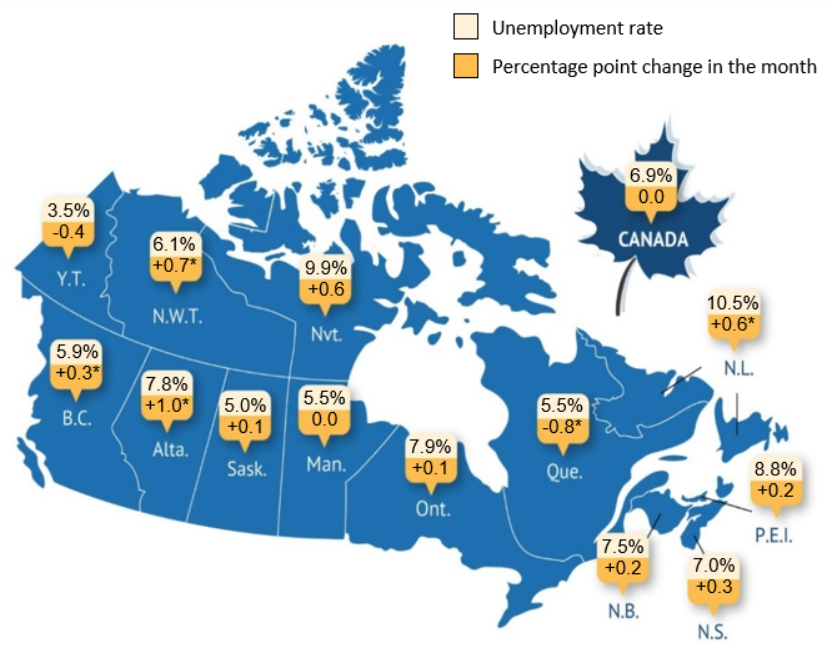Search KamloopsBCNow
- Food & Drink
- Biz+Tech
- Columns
- Travel & Lifestyle
- Arts & Culture
- News & City Info
- Events
- Webcams
- Advertise
- Real Estate
- Contests
- Best Of the city
- Faces of Kamloops
- More
- Real Estate Listings
- Subscribe
- Contact
Canada’s unemployment rate didn’t move in July, according to Statistics Canada.
It remained stuck at 6.9 per cent.
That’s despite the economy overall losing 41,000 jobs.
There were 1.6 million people classed as unemployed in July, with 23.8 per cent of those in long-term unemployment (i.e., searching for work for 27 weeks or more).
In British Columbia, the unemployment rate increased to 5.9 per cent. It was 5.6 per cent in June.

StatCan said that, factoring in gains and losses, the province lost 16,000 jobs overall, with core-aged women losing 17,000.
Across BC, the unemployment rates in July (June in brackets) were:
Kelowna: 4.7 per cent (6.2)
Kamloops: 10.7 per cent (9.2)
Chilliwack: 5.6 per cent (6.1)
Abbotsford-Mission: 6.4 per cent (6.5)
Vancouver: 6.1 per cent (6.2)
Victoria: 4.8 per cent (3.9)
Nanaimo: 7.8 per cent (7.4)
Across Canada, StatCan said the decline in employment “was concentrated among youth aged 15 to 24,” who lost 34,000 jobs overall.
The jobless rate among that age group was 14.6 per cent in July, the highest rate since September 2010 (if COVID-19 years are excluded).
StatCan highlighted the “difficult summer job market” for students, who had an unemployment rate of 17.5 per cent in July, the highest for that month since 2009 (excluding 2020).

Employment among 25–54-year-olds (core age) and 55+, however, was “little changed,” according to the agency.
In terms of industries, information/culture/recreation lost 29,000, while construction lost 22,000.
Transportation and warehousing saw job increases of 26,100 and educational services saw a bump of 22,400.
The private sector bore the brunt of the losses in July, with employment numbers down 39,000. There was "little change" in the public sector, however.
Average hourly wages were up across the board, logging a 3.3 per cent increase to $36.16.
The Bank of Canada will make its next interest rate decision on Sept. 17. It announced on July 30 that the rate would remain at 2.75 per cent.